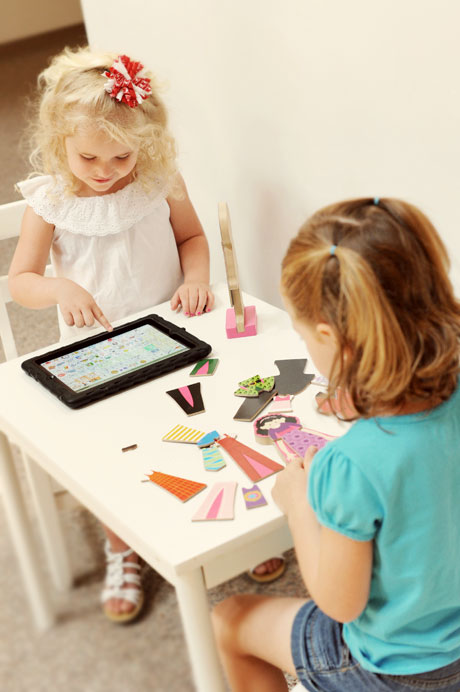We use cookies to make your experience better. To comply with the new e-Privacy directive, we need to ask for your consent to set the cookies. Learn more.
Language Development
When designing and implementing treatment plans for individuals with delayed language skills, it is important that we look at typical development as a framework. The LAMP Words for Life™ app is complex enough to give every individual the ability to achieve their full communication potential while offering the ability to present vocabulary in a manner that encourages each individual to be successful at their current skill level and continue to progress.

Early Language Skills
Early communication skills include a variety of non-verbal signals that children use to influence the people around them. They learn to gesture, to take turns, to babble, cause and effect and to use eye gaze. Even before a child understands that words have meaning, they learn that they can influence the world around them with movements and sounds. These non-verbal skills can be learned and developed while using a speech-generating device to communicate. They can develop gestures and eye gaze that pair with words they are using (e.g., “that” while pointing to or looking at an object), take turns during play and conversations, babble by pressing sounds and words on the device and learn cause and effect when their words are reinforced.
First Words
Between the ages of 1 and 2, most children develop a vocabulary of 50-100 words and use them for a variety of different reasons:
Greeting: “hi”
Parting: “bye-bye,” “goodbye”
Requesting: “juice,” “this,” “go,” “up”
Requesting Assistance: “help”
Naming/Labeling: “kitty,” “mummy”
Recurrence (to comment or request): “more,” “again”
Existence (objects/people/events are noticed): “that,” “uh-oh,”
Rejection (to stop an object or action): “stop,” “no”
Comment: “big,” “yuck,” “mine”
Asking: “what?”, “that?”
Notice that there is a wide variety of words represented in the above list: nouns, verbs, interjections, prepositions, pronouns, adverbs and adjectives. A good “first words” list will be a combination of these different types of words and should primarily consist of words that can be used in a variety of settings.
Combining Words
As children’s vocabularies grow, they begin to combine words (e.g., “that juice,” “more ball,” “give me”) and learn to use word endings like –ing and plural –s.
Grammar
By the time a child is 5, he or she is typically able to form complex sentences using past tense forms, articles like “a” and “the” and using contractions like “they’re” or “he’s.”
LAMP Intervention
When using a speech-generating device, it is important to follow these developmental guidelines. The LAMP Words for Life app allows the individual to develop a single-word vocabulary and then learn to string them together in 2- and 3-word phrases before learning to use longer sentences. The app also allows the user to learn to add the “–ing” and plurals “-s” markers at the ends of words. AAC allows the individual who is nonverbal the opportunity to be an active learner and further develop their language and communication skills. To find a LAMP Certified Professional near you, please visit: www.aacandautism.com/lamp-certification.
